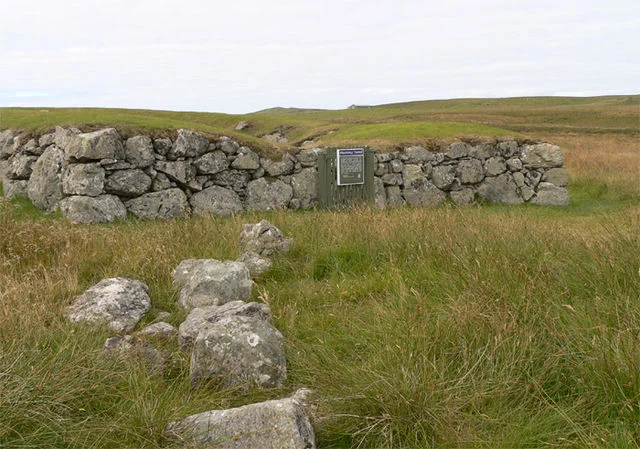Stanydale Temple is a prehistoric site on the Shetland Islands, Scotland, known for its unique architectural design. Situated on the western side of Mainland Shetland, the site has long intrigued archaeologists due to its distinct layout and unclear purpose. Radiocarbon dating places its construction around 2000 BC, during the Neolithic period, a time marked by the development of agriculture and increasing social complexity across northern Europe.
Get your dose of History via Email
Archaeological Discovery and Structure
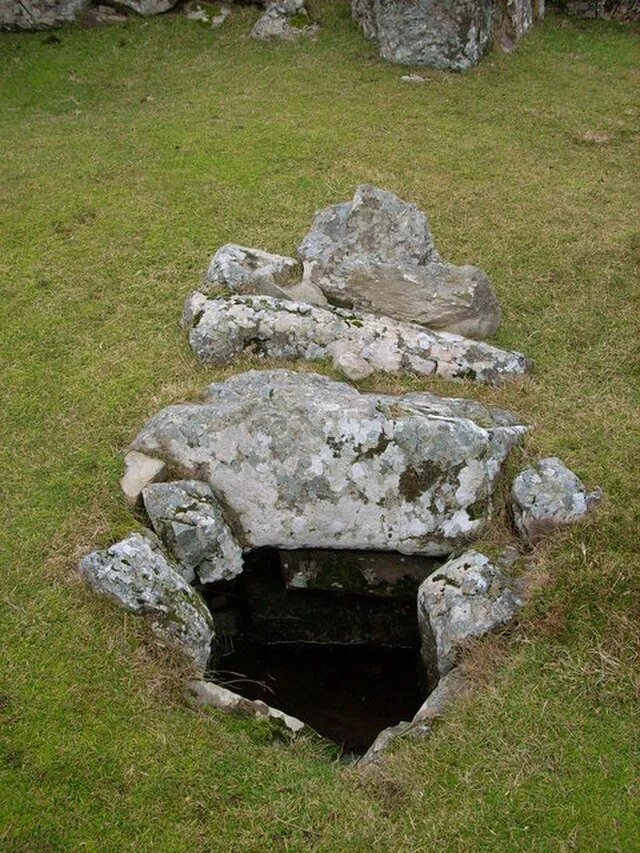
Stanydale Temple was first identified in the 1940s during excavations led by archaeologist Charles Calder. Calder’s work revealed a large, oval-shaped stone structure with massive, thick walls—an unusual design in Shetland’s Neolithic structures. The building measures about 13 meters by 7.6 meters, making it the largest structure of its kind in Shetland. The walls reach nearly two meters in thickness in places, giving the building a fortress-like appearance.
The interior of the structure has an oval floor plan, and its walls include several recesses and alcoves, indicating possible areas for storage or seating. Its design is different from typical Neolithic homes or community buildings found in the region, leading to speculation about its unique purpose.
The Purpose of Stanydale Temple
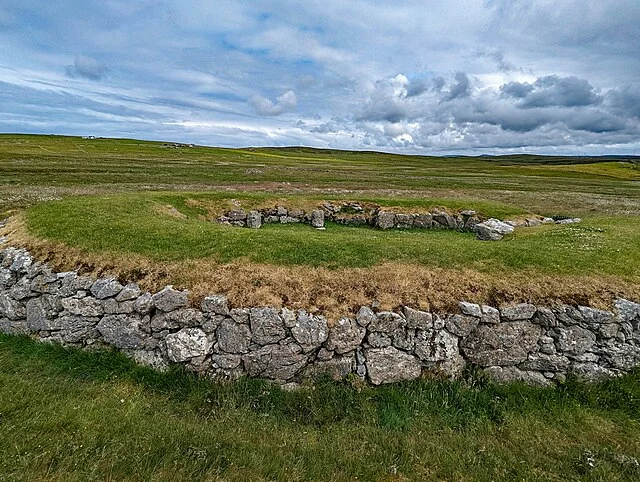
The exact function of Stanydale Temple remains unknown. However, its size, layout, and robust construction suggest that it likely held a special role within the Neolithic community. Some archaeologists believe it may have served as a ceremonial or ritual site, a purpose implied by the term “temple.” The lack of domestic features—such as hearths or evidence of everyday life—further supports this theory.
Other interpretations suggest that the temple may have functioned as a communal gathering space, where people from nearby settlements assembled for social or economic activities. The structure’s large, centralized design could accommodate numerous people, making it ideal for gatherings or community meetings.
Unique Features of Stanydale Temple
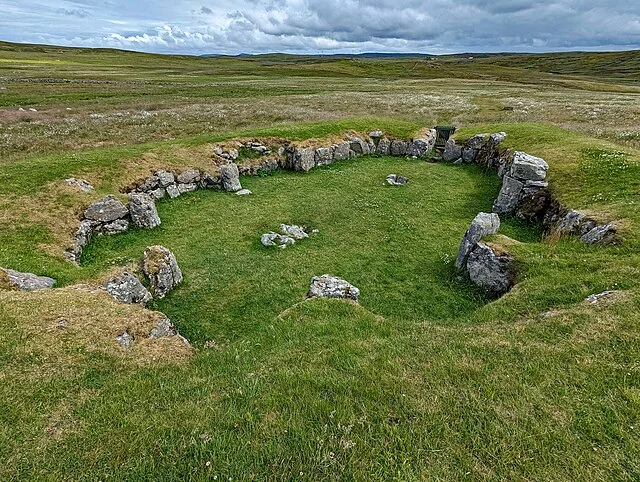
A key feature of Stanydale Temple is its forecourt, a rectangular area at the entrance that differs from the main oval interior. This forecourt area, defined by upright stones, might have served as a waiting area or a preliminary gathering space for visitors. The entrance to the building itself is narrow, which may have controlled access to the main hall, perhaps emphasizing the structure’s importance.
Additionally, archaeologists uncovered several standing stones around the site. Although they do not form a true stone circle, these stones may have had symbolic significance or marked boundaries, enhancing the temple’s ritualistic atmosphere.
Cultural Context and Comparisons
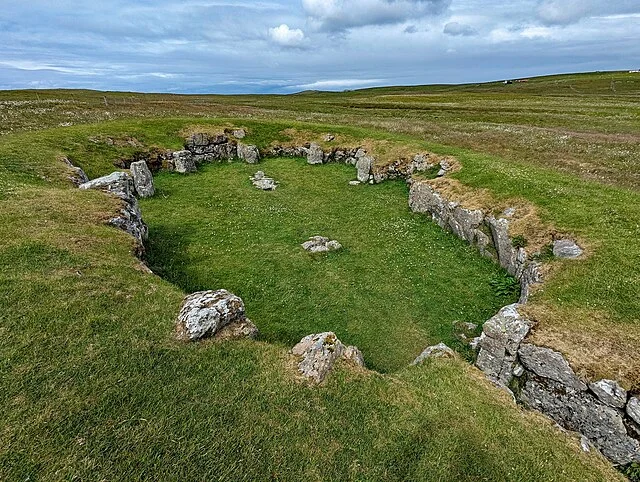
Stanydale Temple is not entirely isolated in terms of architectural style. Similar structures have been found in Orkney and northern Scotland, suggesting cultural connections across the region during the Neolithic period. For instance, Maeshowe in Orkney, a large chambered cairn and passage grave, also features massive stonework and an impressive interior. While different in function, Maeshowe and Stanydale Temple share an emphasis on monumental architecture, implying that early communities on the British Isles shared construction techniques and architectural ideas.
The Shetland Islands’ remote location may have isolated the community, but the construction of such a distinctive site suggests they were influenced by trends across Neolithic Britain. The temple’s design likely reflects the local adaptation of broader architectural traditions, giving it unique regional significance.
Preservation and Research
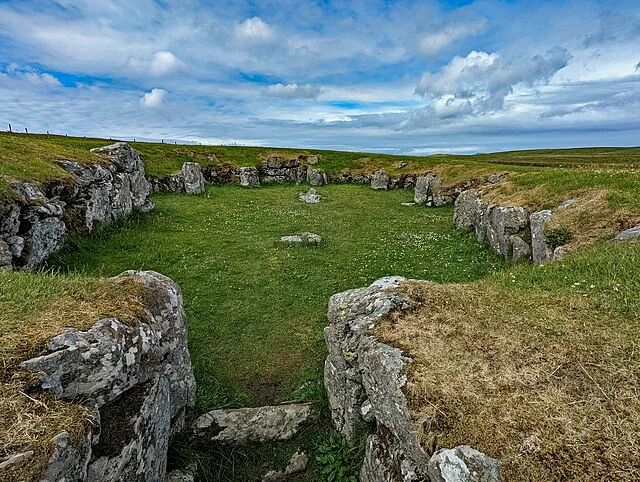
Stanydale Temple remains a protected archaeological site, overseen by Historic Environment Scotland. It continues to attract researchers and visitors who seek to understand the culture and beliefs of Shetland’s Neolithic inhabitants. In recent years, advances in archaeological techniques, including soil analysis and 3D mapping, have offered new insights into the temple’s construction and surrounding environment.
Further excavation and study may reveal additional artifacts or structural elements, which could provide clues to the temple’s purpose. The surrounding landscape, which includes evidence of ancient agricultural activity, may also shed light on the social organization of the people who built Stanydale Temple.
Conclusion
Stanydale Temple stands as one of Shetland’s most mysterious and significant prehistoric sites. Its large, oval structure, forecourt, and nearby standing stones suggest that it played a crucial role within the Neolithic community. Whether used for ceremonial, communal, or ritualistic purposes, the temple reflects the skills and social complexity of its builders.
As archaeological research continues, Stanydale Temple remains a focal point for understanding Shetland’s ancient past. Its connections to broader Neolithic trends and its distinct architectural style highlight the rich cultural history of Shetland’s earliest inhabitants.
Source:

